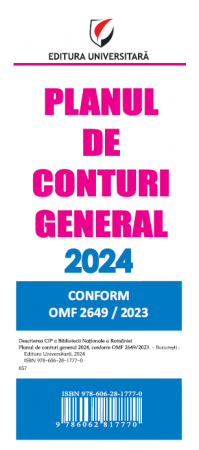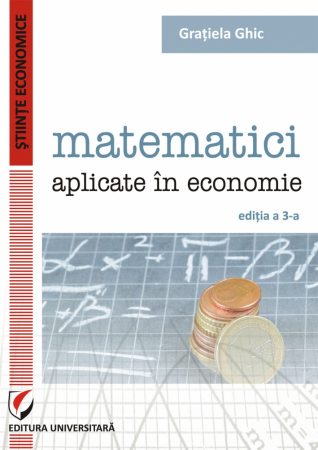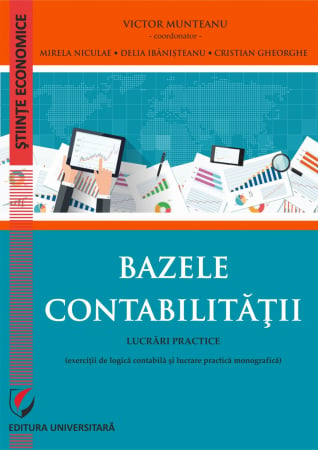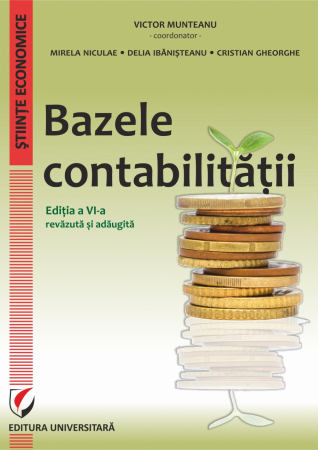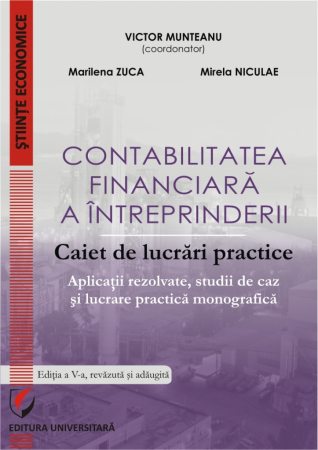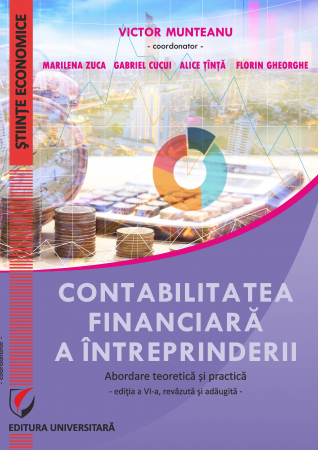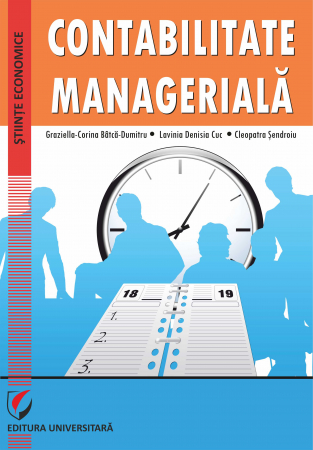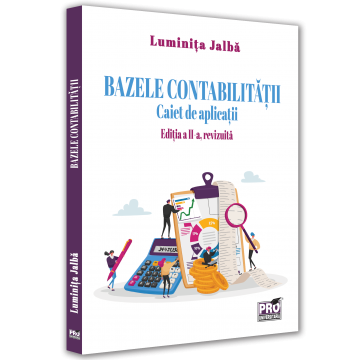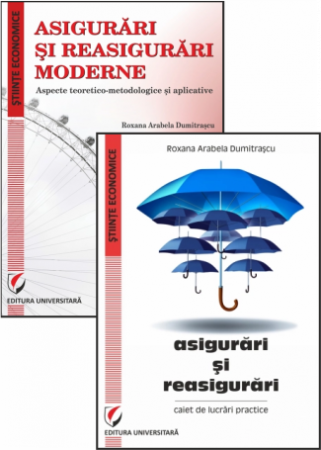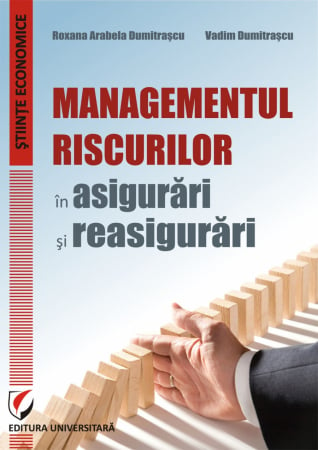Publisher: Editura Universitară
Author: Virginia Câmpeanu, Sarmiza Pencea
ISBN: 978-606-591-974-7
DOI: 10.5682/9786065919747
Publisher year: 2014
Edition: I
Pages: 205
- Description
- Download (1)
- Authors
- Content
- More details
- Reviews (0)
The book tries to answer some questions asked by either investors concerned with finding the best investment placements in a particularly stimulating area across Europe, that of renewables as energy sources, or domestic producers involved in the real economy, especially in energy-intensive sectors, either students concerned with industrial policies whose engine is energy, or interested in sustainable development strategies at global, European and national level that outline the directions of economic and social development with respect for environmental protection, beneficial to health , people's well-being and prosperity.
The authors evaluate the potential and the main determinants of the development of renewable sources in Romania and the consequences of a particularly generous or stimulating policy for producers in the period 2011-2013, compared to other member states of the European Union. Based on comparative analyzes, the paper advances some possible scenarios for medium and long term development of the energy sector based on renewable sources, given a recent paradigm shift in policies in Romania, other EU member states and the European Union , in the post-crisis period. At the same time, the consequences on investors and national energy markets are assessed.
The authors present the latest strategic directions of the European Union in the field of renewables, by types of technologies and related fields, such as industrial policy and competition policy on state aid, which applies to renewable energy sources from 2014 to 2035-2050.
-
Energiile regenerabile – Incotro? Intre „mit” si realitatile post-criza din Europa si Romania
Download
VIRGINIA CAMPEANU
SARMIZA PENCEA
Chapter I
IN SEARCH OF GLOBAL SURVIVAL STRATEGIES / 9
Virginia CAMPEANU
I.1. Renewables - from the myth of resource depletion to climate change mitigation / 10
The limits of energy resources - myth or reality? / 12
A new argument for the use of alternative energy sources / 13
The contribution of renewable energy sources to the reduction of greenhouse gas emissions / 14
Energy security / 15
After 40 years, survival strategies are still being sought / 16
What does 2013 bring new? Do limited sources and climate change become "myths" or not? / 17
Renewable, expensive and difficult for European consumers to bear / 19
I.2. Turbulences in the development of renewable energy sources at global and European level / 21
Changes are required in policies to promote renewables / 21
The global perspectives of renewable energies remain positive until 2018/22
Uncertainty over renewables policy - the number one enemy of investors / 22
Bibliographic references Chapter I / 23
PART I
EUROPEAN UNION AND ROMANIA. STRATEGIC ORIENTATIONS AND THE POTENTIAL FOR THE DEVELOPMENT OF RENEWABLE ENERGY SOURCES / 25
Chapter II
EUROPEAN UNION POLICY ON RENEWABLE ENERGY SOURCES / 26
Virginia CAMPEANU
II.1. A single European policy coagulates climate change and energy / 26
The European Union acts as a global leader / 27
In the perception of Europeans, climate change - a cause for concern, more serious than the economic situation / 28
The benefits of European climate and energy policy / 29
II.2. EU policy on renewable energy / 29
EU member states are sovereign in setting energy policies and programs / 30
The main moments in the evolution of the renewable energy policy / 30
Changing EU policy for 2020 through the Renewable Energy Sources Directive / 31
II.3. Perspectives of the electricity mix in 2020 / 37
Solar photovoltaic installations - the largest increase in installed capacities until 2020/37
Share of renewable energy in Member States' electricity consumption in 2020/38
The share of renewable energy in the transport sector / 38
II.4. Comparative analysis of support schemes for renewables in EU Member States / 39
II.5 Consequences of the generous policy for stimulating renewables in the European Union / 41
Positive effects / 42
Costs of generous SRE / 43 support schemes
II.6. Multiple controversies lead to a new change in the European model of ensuring energy security / 44
Do Americans still need solar power if they have shale gas? / 46
II.7 Renewable subsidies reform started in 2013. Comparisons by EU member countries / 47
II.8 News on EU energy and climate policy for 2030 / 49
Conclusions / 52
Bibliographic references, Chapter II / 53
Chapter III
ROMANIA'S POLICY IN THE FIELD OF RENEWABLE ENERGY SOURCES / 54
Virginia CAMPEANU
III.1. Romania 's strategic orientations in the field of renewable energy sources / 54
III.2. Romania's policy to support the production of energy from renewable sources until 2020 / 59
III.3. Support scheme for renewable energy sources in Romania / 61
III.4. Romania: paradise for investors in renewable energy. Consequences of the generous RES development policy in Romania / 63
III.5. Recent changes in Romania 's policy on supporting renewable energy sources / 67
Will renewable energy investors abandon Romania? / 68
Romania - however, appears quite attractive and may mark a new "boom" of investments / 69
Conclusions / 70
Bibliographic references, Chapter III / 71
Chapter IV
THE POTENTIAL OF THE EUROPEAN UNION IN THE FIELD OF RENEWABLE ENERGIES / 72
Sarmiza PENCEA
IV.1. "Rediscovering" the valences of energy from renewable sources / 72
IV.2. Evaluation of the potential of renewable energy sources - theoretical and methodological aspects / 73
IV.3. EU potential in the field of renewable energies / 76
European countries with the greatest potential to produce energy from renewable sources / 78
In 2050: Reversing the current ratio between renewables / hydrocarbons to cover electricity demand in Europe / 80
Europe's energy mix and interdependencies / 82
Selective bibliography Chapter IV / 83
PART II
NEWS AND PERSPECTIVES FOR THE DEVELOPMENT OF WIND, SOLAR AND BIOMASS ENERGY
EUROPEAN UNION AND ROMANIA / 85
Chapter V
WIND ENERGY / 86
Iulia Monica OEHLER-SINCAI
V.1. News and perspectives for the development of wind energy sources in the European Union / 86
V.1.1. The global context, between challenges and opportunities / 86
The increase of about 12 times the total production capacities in the years 2000/86
Ten countries concentrate over 80% of newly installed wind energy capacity worldwide / 88
V.1.2. European Union - world leader with an accelerated dynamics of the wind industry / 89
High level of geographical concentration of new wind capacities in the EU / 90
The place of the main European producers in the European and world wind industry / 90
Trends registered at the level of some major European players on the wind energy market / 91
Brief comment on offshore wind capacities / 92
V.1.3. Investments in turbines and wind farms / 94
V.1.4. Contrasts between national targets and the effective capacity to generate wind energy in the EU / 96
V.1.5. Wind energy in the EU, between uncertainty and favorable prospects / 98
V.2 Wind energy in Romania / 100
Sarmiza PENCEA
V.2.1. Exploitation of wind energy: advantages and risks / 100
V.2.2. Landmarks regarding wind exploitation technology / 102
V.2.3. Wind potential in Romania: theoretical, technical and economic / 105
V.2.4. The situation of the wind energy industry in Romania / 107
V.2.5. Regional development of the wind industry in Romania / 113
V.2.6. Who are the investors in the Romanian wind energy sources? / 115
V.2.7. Correlations between the wind energy development capacity and the wind energy support system in Romania / 120
The generous scheme of support through green certificates is changing from 2013/2020
Is the real impact of reducing over-subsidization of green energy known? / 121
Conclusions / 124
Bibliography Chapter V.1 / 125
Bibliography Chapter V.2 / 126
Chapter VI
SOLAR ENERGY / 129
Virginia CAMPEANU
Ecaterina STANCULESCU
VI.1 Solar energy in the European Union / 129
VI.1.1. The global context: a young industry with an extremely accelerated dynamics / 129
What are photovoltaics? Simple explanations for non-specialists in the field / 130
PV technology - an increasingly competitive technology / 131
TOP-10 countries with photovoltaic installations in 2013/132
Romania in the Top-10 countries with the highest solar photovoltaic capacities newly installed in 2013/132
Top-10 countries with the highest cumulative solar photovoltaic capacities until 2013/133
VI.1.2. Development of solar energy in the European Union / 134
The place of photovoltaic solar energy in the whole European electricity industry / 134
Europe 's place on the photovoltaic market / 134
The evolution of the installations of new PV capacities in the countries of the European Union / 135
Segmentation of the European photovoltaic energy market / 137
VI.1.3. Scenarios for the evolution of the photovoltaic solar energy market in Europe in the medium and long term / 140
Medium term scenarios / 140
Long - term scenarios / 141
VI.1.4. Support schemes and perspectives for PV energy in some European countries, at the level of 2013 / 142
VI.1.5. European research projects in the field of solar energy / 145
Conclusions / 146
VI.2. Photovoltaic solar energy in Romania - too good or too much? / 147
Cristina BALGAR
Introduction / 147
VI.2.1. Romania's policy in the field of energy from solar sources, independent but correlated with that of the EU / 148
Scheme of support for solar energy sources led Romania to 7th place in the World Top-10/148
Recent changes in national policy to support solar energy sources / 150
The necessary steps for the implementation in Romania of an investment project for the production of photovoltaic energy / 153
VI.2.2. Romania 's potential in the field of solar energy production / 155
Oltenia, Muntenia, Dobrogea and the south of Moldova-the areas with the highest potential on the solar map of Romania / 155
Technological elements for transforming solar sources into Energy / 156
We have solar energy resources that can cover 2.5% of annual energy consumption. Is it a lot, is it a little? / 158
The spectacular increase of installed capacities in 2013 exceeds 5 times Romania's target for 2020/159
Conclusions / 163
Bibliographic references Chapter VI.1 / 164
Bibliographic references Chapter VI.2 / 164
Chapter VII
BIOMASS - SOURCE OF "GREEN ENERGY" IN THE EU AND ROMANIA / 167
Dr. Andreea DRAGOI
Biomass - a "green energy" with European potential / 167
VII.1. European Union policy on the use of biomass as a renewable energy source / 168
EU biomass legislation - stimulates production and investment in the field / 169
Increase the share of renewables to 27% of total EU energy consumption by 2030/172
VII.2. Romanian legislation on biomass: a proactive approach to ecological energy alternatives / 173
VII.3. The potential of biomass as a renewable energy source at European level / 175
Biomass resources in Europe / 175
Doubling the use of biomass as an energy source is anticipated / 175
Biomass - the most used RES at EU-28 level. / 177
Biomass - clean energy alternative and greenhouse gas reduction / 179
VII.4. The potential of biomass as renewable energy in Romania / 180
Conclusions / 184
Bibliographic References Chapter VII / 187
ANNEXES
Annex II 1. European Union: Important moments in the evolution of the policy in the field of renewable energy sources / 189
Annex II 2. Definitions of some notions used in the Renewable Energy Sources Directive / 2009/192
List of abbreviations / 193
The book tries to answer some questions asked by either investors concerned with finding the best investment placements in a particularly stimulating area across Europe, that of renewables as energy sources, or domestic producers involved in the real economy, especially in energy-intensive sectors, either students concerned with industrial policies whose engine is energy, or interested in sustainable development strategies at global, European and national level that outline the directions of economic and social development with respect for environmental protection, beneficial to health , people's well-being and prosperity.
The last 30 years have been marked by ensuring sustainable global development, setting priority directions, including reducing the consumption of hydrocarbons (coal, oil, gas) and their partial replacement with non-polluting alternative energy sources such as wind energy, energy solar, geothermal, wave energy or biomass.
The authors evaluate the potential and the main determinants of the development of renewable sources in Romania and the consequences of a particularly generous or stimulating policy for producers in the period 2011-2013, compared to other member states of the European Union. Based on comparative analyzes, the paper advances some possible scenarios for medium and long term development of the energy sector based on renewable sources, given a recent paradigm shift in policies in Romania, other EU member states and the European Union , in the post-crisis period. At the same time, the consequences on investors and national energy markets are assessed.
The authors present the latest strategic directions of the European Union in the field of renewables, by types of technologies and related fields, such as industrial policy and competition policy on state aid, which applies to renewable energy sources from 2014 to 2035-2050.
We cannot fail to remember that our approach aims to support decision makers by analyzing Romania's policy in the broader context of the European Union's policy in the field of renewable energy sources, institutional and financial mechanisms, the first effects of economic levers to stimulate field, as well as by analyzing the new paradigm regarding the financial mechanisms in the EU and some member states, which could influence the medium-term development potential of this sector, as well as the interest of foreign investors in the European Union in general and in Romania in particular.
Prof. Dr. Virginia Campeanu
April 2014

6359.png)
![Renewable Energy - Where to? Between the "myth" and the post-crisis realities in Europe and Romania [1] Renewable Energy - Where to? Between the "myth" and the post-crisis realities in Europe and Romania [1]](https://gomagcdn.ro/domains/editurauniversitara.ro/files/product/large/energiile-regenerabile-incotro-intre-mit-si-realitatile-post-criza-din-europa-si-romania-1013-325414.jpg)
